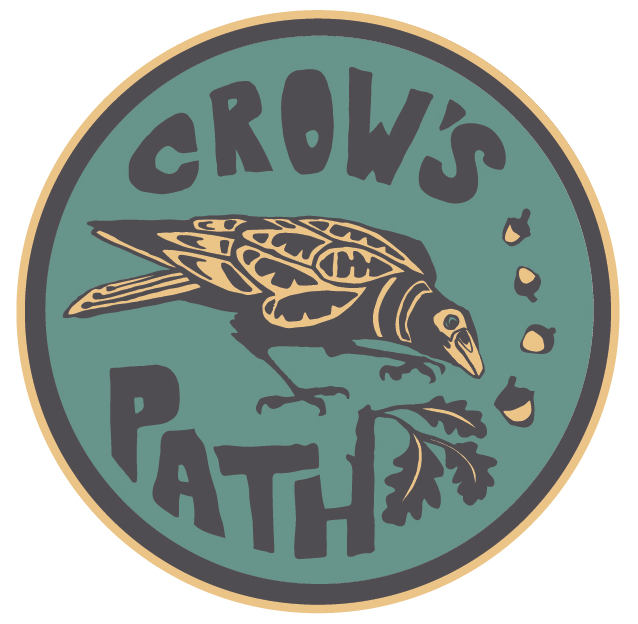The Wild Burlington Newsletter

Issue #2.04.a | More things to do with twigs
This was an exceptionally warm March, and all the rain over the past couple of weeks has flushed many of the amphibians from their overwintering sites down into the wetlands. While I’ve seen amphibians move as early as March 8 down in Shelburne, VT, there were numerous nights over the past month where there was movement. This is significantly earlier than the 1st or 2nd week of April, the average date of the first big movements of amphibians. And you can now hear wood frogs and spring peepers chorusing from the wetlands. Exciting times!
If you’re not as keen on braving cold rainy nights to see amphibians migrating, but still want to get out and explore, behold Twiggie Parachutes!
~ Teage
A big thanks to Casey B, our newest patron!
We’re climbing the ladder of goals! At our next goal, to 30 patrons, I’ll be making that awesome tree ID video series you always wanted.
So if you’re a fan of the newsletter and want to support the awesome work of Crow’s Path, please consider becoming a patron over at Patreon.com.

Red-Winged Blackbird Lecture
Wednesday, April 8 @ 5pm on Zoom
Did you missed the Wild Burlington Lecture on red-winged blackbirds? Well, fear not, I’ll be giving a similar talk on Wednesday @ 5pm. The lecture, like all things these days, will be held on Zoom, so you can watch from the comfort of your couch. Special thanks to North Branch Nature Center for hosting!
Activity #3: Twiggie Parachutes
I’ve been enjoying making short videos and am starting to get the hang of this. Check out the video tutorial, or or read on for a bit more context before making your very own parachutist.

Twigs have a surprising amount of personality, and I’ve always got my eyes out for a Twiggie. For this activity, you’ll be out on the prowl looking for an opposite branched tree or shrub for your Twiggie Parachutist. Once you’ve found one, cut a section along the red dotted lines as in the diagram below. Flip the section of twig upside down and the paired branches can now act as arms that hold the “parachute” (a grocery bag) in place. A stout twig with some heft to it will pull on the parachute enough to inflate it as it falls gracefully to the ground. And that’s pretty much all there is to making a Twiggie Parachutist.
Steps
- Collect an opposite branched twig (“Do the opposite of what your MA says”)
- Cut the handles off of the grocery bag
- Put 4 or 8 pieces of duct tape evenly spaced on the margins of the bag
- Punch holes through the tape
- Loop string through the holes so that each loop hangs down ~10-12″ below bag (make dogbane cordage for extra credit)
- Put the loops around (or tie them to) the arm pits of the parachutist
- Drop your Twiggie Parachutist from up high!
And that’s it. The video will give a clear sense of the process. Enjoy!

Launch Time
We’ve been making parachutists at Crow’s Path with kids from the very beginning. It’s hard to tell because it so seamlessly blends in, but mentor-without-borders, Sam Hubert, used Twiggie Parachutist special effects for his 2015 movie starring Gus & Toby. Enjoy!
Here in Vermont, we’ve got 70+ species of trees that we choose from to make our Twiggie Parachutist, and as a naturalist I always like to know what materials I’m using. Beginning to ID what tree your twig came from can be tricky, at least until you know what to look for. An introduction to tree identification would first teach you to split out the dozen or so conifers from the larger group of broad-leaf trees. Easy peasy.
To sort the broad-leaf trees, we can look at phyllotaxy, the arrangement of leaves and twigs on the branches, which gives us 2 smaller categories (see image above): those with opposite branching and those with alternate branching (there’s a third, uncommon group of oddballs, like buttonbush and catalpa, with whorled branches, where 3+ branches come emerge at each node).We’ve only got about 15 or so species of trees with opposite branches, so this makes it much easier to identify a tree with opposite branches. Just remember:
“Do the opposite of what your MA tells you”
(MA = Maples and Ash)

That works for trees, but if we’re looking at the common trees and shrubs of our region, you can always imagine a “MAD Capped Bucking Horse” (as in the image above)
- Maple, Ash, Dogwood
- Caprifoliacae (the family of plants that includes elderberries, honeysuckles, and viburnums),
- Buckthorns & Buckeyes
- Horsechestnut)
And interestingly, ash are part of the olive family, Oleaceae, which also includes our ornamental lilacs and forsythia, both of which have opposite branches. Note too that buckthorns can have sub-opposite or sometimes alternate branches.
A gallery of phyllotaxy



Instagram | Facebook | Website
View this in your browser
Copyright © 2020 Phyllotaxy, All rights reserved.
Our mailing address is:
Phyllotaxy, 56 Latham Ct, Burlington, VT 05401-1522


